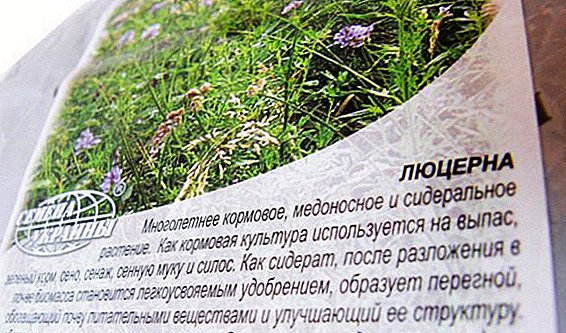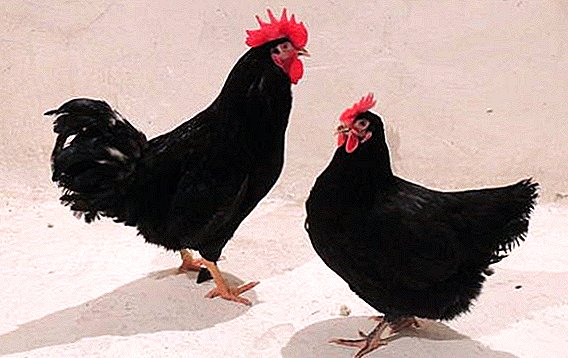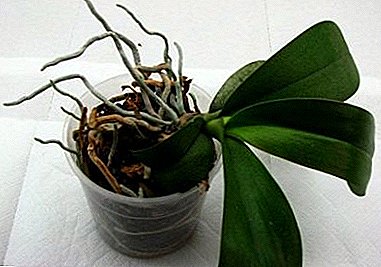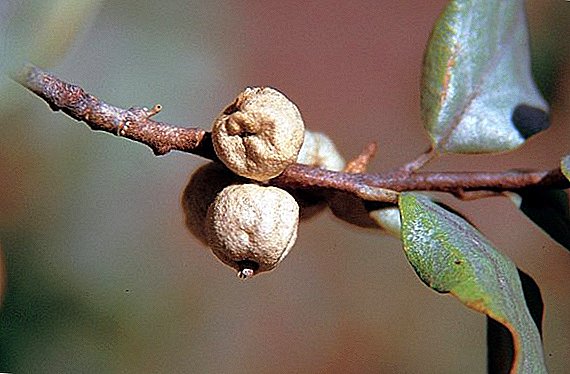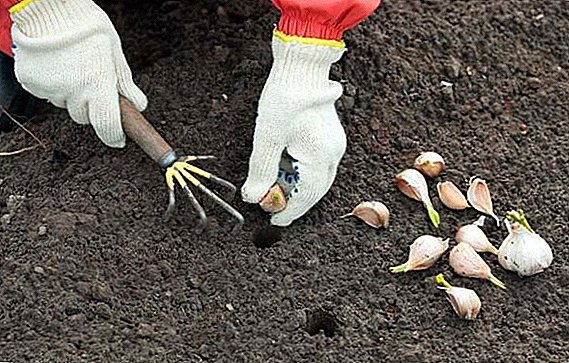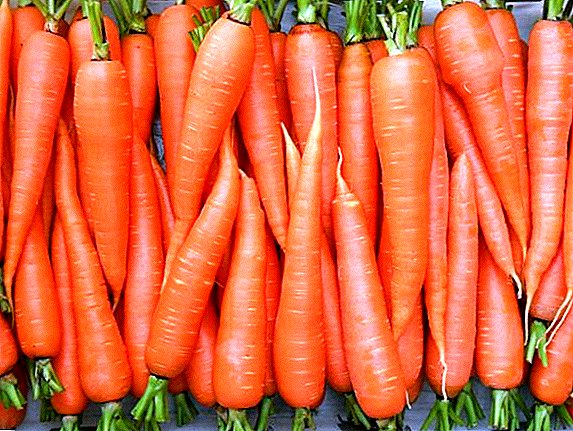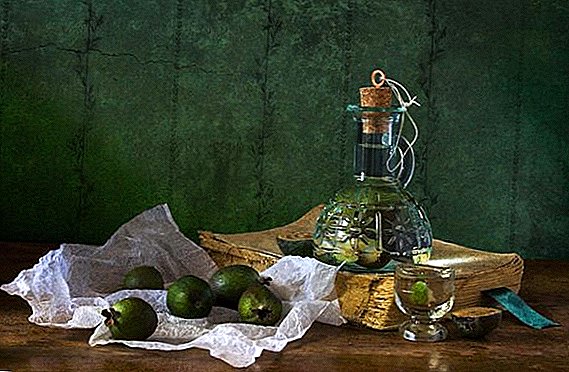 Surely you have often heard the saying: “Everything in the household is useful,” and I must say that these are not just words. In particular, when planting garden crops and further caring for plants, you will undoubtedly need the standard tools found in many home first-aid kits. If you still do not imagine the use of boric acid or hydrogen peroxide in the garden and in the garden, then this article is for you.
Surely you have often heard the saying: “Everything in the household is useful,” and I must say that these are not just words. In particular, when planting garden crops and further caring for plants, you will undoubtedly need the standard tools found in many home first-aid kits. If you still do not imagine the use of boric acid or hydrogen peroxide in the garden and in the garden, then this article is for you.
Iodine
We are accustomed to using this tool only for treating wounds and sometimes during inhalations, but in fact the area of its possible use is wider. Given that iodine is a good antiseptic, we can assume the effectiveness of its use in the fight against pathogens on plants, in particular, with rotten.  The prepared solution, consisting of 5-10 drops of this product, diluted in 10 liters of water, reliably protects strawberries and strawberries from the disease, if you spray it with the resulting liquid until the first florets appear. Such prevention should be performed at intervals of two to three times per season, keeping a pause of 10 days.
The prepared solution, consisting of 5-10 drops of this product, diluted in 10 liters of water, reliably protects strawberries and strawberries from the disease, if you spray it with the resulting liquid until the first florets appear. Such prevention should be performed at intervals of two to three times per season, keeping a pause of 10 days.  Dissolving only one drop of iodine in 3 liters of water, you can easily increase with it the productivity of the crop and the size of the grown tomatoes, and all you need to do is pour the seedlings with the mixture. After transplanting them into open soil, you can additionally water the plants with a mixture of water and iodine: there are only three drops per bucket. The resulting solution is poured into the soil at the rate of 1 l per 1 bush.
Dissolving only one drop of iodine in 3 liters of water, you can easily increase with it the productivity of the crop and the size of the grown tomatoes, and all you need to do is pour the seedlings with the mixture. After transplanting them into open soil, you can additionally water the plants with a mixture of water and iodine: there are only three drops per bucket. The resulting solution is poured into the soil at the rate of 1 l per 1 bush.
When mixing 10 liters of water with 40 drops of iodine and adding a spoon of peroxide, you will receive a mixture that protects the bushes from the ubiquitous phytophthora. And if you add to 10 liters of water 10-12 drops of iodine and another liter of nonfat milk, you will have a solution against the powdery powdery mildew that lives on cucumbers. In addition, this brown liquid is a constituent element of drugs designed to prevent the appearance of yellow leaves and their drying, as well as to rejuvenate the lash of some plants.
Zelenka
Like iodine, brilliant green is quite popular disinfectorwhich is often used to treat wounds. However, it can be used in the garden, because, like people, plants need appropriate disinfection of damage (instead of garden warrior). For example, if during transportation the peel of pumpkin fruit is damaged, then applying the green solution to this place will help extend the shelf life of such a crop.  Zelenka is also useful for eliminating (or preventing) phytophthora and powdery mildew on cucumbers and tomatoes: 40 drops of the product must be diluted in 1 bucket of water.
Zelenka is also useful for eliminating (or preventing) phytophthora and powdery mildew on cucumbers and tomatoes: 40 drops of the product must be diluted in 1 bucket of water.
Important! In order not to filter this medicine drop by drop each time you need to use it, you can simply pour the contents of the bottle into a liter of water, then gradually pour it from the container into a bucket, as they say, "by eye".
At the same time, such a weak solution will improve the quality of the fruit string on cherries, and the treatment of the tubers with flowers after stripping the areas damaged by rot will prolong their storage.
If you treat the brilliant green (one bottle in a bucket of water) with the seeds chosen by slugs, it will help to cope with these gastropods.
Potassium permanganate
If the previous few drugs are not used by all gardeners, the solution of potassium permanganate is precisely known to many summer residents. At least you can withstand the seeds crops sown before planting (0.5 g of substance per 100 ml of liquid is enough), which will help destroy all existing pathogens that often remain on the seed after winter.  The use of a substance to disinfect plants provides for a twenty-minute soaking of seed, and to create good fertilizer (used for currants, raspberries, gooseberries and other similar crops in early spring) can be added to the solution (in this case, enough for 10 liters of liquid potassium permanganate) boric acid (a small pinch). In addition, this version of the solution can be used to feed crops grown on sandy lands.
The use of a substance to disinfect plants provides for a twenty-minute soaking of seed, and to create good fertilizer (used for currants, raspberries, gooseberries and other similar crops in early spring) can be added to the solution (in this case, enough for 10 liters of liquid potassium permanganate) boric acid (a small pinch). In addition, this version of the solution can be used to feed crops grown on sandy lands.  If you dissolve 2 teaspoons of the substance in the same ten liters of water, then the resulting solution will help save strawberries from damage gray rot: you only need to spray it as soon as it fades.
If you dissolve 2 teaspoons of the substance in the same ten liters of water, then the resulting solution will help save strawberries from damage gray rot: you only need to spray it as soon as it fades.
In a well-infused solution of potassium permanganate (the water should turn dark pink), potato tubers (before direct planting) and other plants are soaked before storage. This action will protect them from the attack of the wireworm and the invasion of pathogens of fungal infections. Slightly pink from potassium permanganate is watered with water for seedlings, and also disinfects the containers in which it will be grown (cups or boxes). Disease prevention involves the processing of the resulting composition of greenhouses and greenhouses.
Important! Even the most useful substance should be used with a sense of proportion, because if you overdo it with the amount of potassium permanganate, its excess in the soil will adversely affect the growth and development of crops.
Boric acid
If you have problems with fruit set, boric acid will help you. Only 2 g of the substance, diluted in half a liter of water, and then brought to the required amount with another ten liters of liquid, will greatly contribute ovary formation after spraying. In addition, the resulting solution will help prevent zucchini rotting and allow tomatoes to more easily cope with the heat in greenhouse conditions.  It can also be added to a weak solution of potassium permanganate, as mentioned above, and used as a feed in early spring. It will not only positively affect the yield, but also increase the taste characteristics of berries.
It can also be added to a weak solution of potassium permanganate, as mentioned above, and used as a feed in early spring. It will not only positively affect the yield, but also increase the taste characteristics of berries.
When using boric acid as a component of the nutrient solution in it, you can soak the seed before placing it in the soil. To do this, two small handfuls of onion peels need to be filled with one liter of very hot water and a solution of ash prepared in advance in a ratio of 1: 1 is added. To one liter of the mixture added 1 g of potassium permanganate, 5 g of ordinary soda and 0.1-0.3 g of boric acid.
Hydrogen peroxide
It is possible to achieve the quickest germination of crops with the help of hydrogen peroxide: when applied, cabbage seeds are soaked in 4% solution for half a day, and tomatoes and beets - for 24 hours. Also, this tool is suitable as an alternative to potassium permanganate in question. disinfection of seed. You only need to lower the seed into the mixture of the specified agent (10%) with water, in a ratio of 1: 1, hold it for twenty minutes and then rinse and dry well. It can be used for different plants in the garden and in the garden.  Hydrogen peroxide is great for soaking carrot and parsley seeds, although cucumbers respond well to its action. All of them not only quickly germinate, but also have a stronger immunity, which has a beneficial effect on the future harvest.
Hydrogen peroxide is great for soaking carrot and parsley seeds, although cucumbers respond well to its action. All of them not only quickly germinate, but also have a stronger immunity, which has a beneficial effect on the future harvest.
To protect tomatoes from late blight, they should be treated with a mixture of ten liters of water, forty drops of iodine tincture and one tablespoon of hydrogen peroxide. Ready solution is an excellent prophylactic agent.
Ammonia
Ammonia can be called universal remedybecause it not only feeds the plants, contributing to their rapid growth, but also helps to get rid of many pests of the garden and garden, for which you only need to water the beds with a solution once a week (one tablespoon of sal ammoniac should be added to one bucket of water). 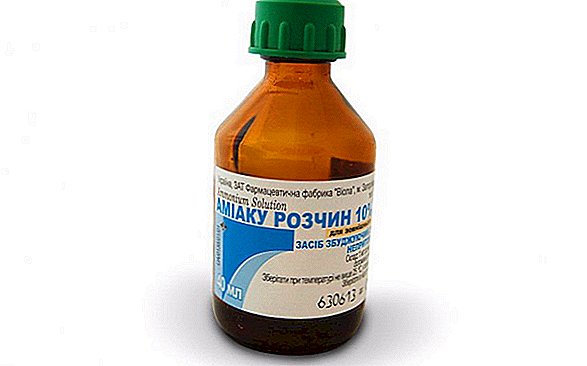 If young trees in your garden are attacked by aphid, then a mixture of water (one bucket), two tablespoons of ammonia and one tablespoon of shampoo or liquid soap will help get rid of it, which will improve adhesion.
If young trees in your garden are attacked by aphid, then a mixture of water (one bucket), two tablespoons of ammonia and one tablespoon of shampoo or liquid soap will help get rid of it, which will improve adhesion.
Important! For the long-term conservation of ammonia odor immediately after watering it is useful to gnaw earth.The specified substance has sufficient effectiveness in the fight against ants, as well as onion and carrot flies. In the first case, places of mass accumulation of small inhabitants are watered with a mixture of 100 ml of ammonia and 1 liter of water, and in the rest - the plants are sprayed with liquid ammonia (1 ml is enough).
Find out what other ways you can get rid of ants in the greenhouse and on the site.
It will be useful to take ammonia with you and to the nature, because, having sprayed the area near the resting place, you will drive away mosquitoes and midges from it.
Aspirin
This tool helps to effectively cope with a headache, and in some cases even prevent it, saving you from the appearance of pests at the dacha. In the simplest application, you can use tablets for disinfection of contaminated soil (one tablet is diluted in 1 liter of water), treating plants, stimulating their growth and development.
In particular, this drug is used to help crops in the initial stages of fungal diseases (the ground under the plant is watered with the indicated solution) and to protect flowers from many ailments (1/4 tablet is diluted in two liters of water).  For use on horticultural crops, aspirin is diluted in a proportion of 0.5 tablets per 2 liters of water, after which bushes and trees are watered with the resulting composition.
For use on horticultural crops, aspirin is diluted in a proportion of 0.5 tablets per 2 liters of water, after which bushes and trees are watered with the resulting composition.
For the summer resident, the medicine is also useful as a means after insect bites, because if you crush a pill and mix it with a small amount of water before getting a slurry, it will help to anesthetize and heal the lesions faster.
Did you know? Some scientists believe that aspirin helps to prevent certain cancers and helps to overcome existing problems of this nature (for example, it improves the well-being of patients with rectal cancer). At the same time, its effect on women is weaker than the influence on males.
Trichopol
Basically, this drug is used in gardening for the prevention of phytophthora on tomatoes and their treatment of fungal diseases. Usually, only 1 tablet of medicine is dissolved in 1 l of water, after which the resulting composition is watered or sprayed on the plants.  Performing the procedure every two weeks, you will forget about the problem of late blight on tomatoes.
Performing the procedure every two weeks, you will forget about the problem of late blight on tomatoes.
With a high probability of occurrence of the disease or at the first symptoms, the dosage of the drug in the treatment solution may increase: not 10 tablets are taken for 10 liters of water, but 20. The resulting solution must be sprayed once every 10 days, but if immediately after Since the treatment will rain, then the procedure should be repeated. Trichopolum is very bitter in taste, and due to its bactericidal action no pest or disease will approach your plantings.
Tar and sulfur tar tar
Both types of the specified soap are used as an additive to herbal infusions and broths to enhance their action in the fight against pests in suburban areas. Moreover, the smell of such products in itself perfectly repels individual insects (for example, a solution of sulfur-tar soap allows you to cope with a gallicle on a pear).  Tar soap is also included in the composition of alcohol for pest repellent in the garden and in the garden. You can prepare it by taking 2 tablespoons of soap and water on a liter of water (a piece of soap is pre-grated) and 1-2 tablespoons of pure alcohol. With periodic repetition of treatments such a composition, you can forget about the invasion of pests.
Tar soap is also included in the composition of alcohol for pest repellent in the garden and in the garden. You can prepare it by taking 2 tablespoons of soap and water on a liter of water (a piece of soap is pre-grated) and 1-2 tablespoons of pure alcohol. With periodic repetition of treatments such a composition, you can forget about the invasion of pests.
Learn more about the properties and use in the garden and the garden of green soap.
Laundry soap
Ordinary laundry soap (72%) has very similar properties (in comparison with the previous version), only it does not have such a characteristic odor, and for the most part the rubbed bar is used as an adhesive when creating complex solutions against insects.  Laundry soap also improves wettability plant surfaces with solutions of special chemicals (pesticides). If a lot of aphids have appeared on the greenery in the garden, then a 1.5% solution of this detergent will help to cope with it, and if there is still a little prepared composition after processing, then they can add fruit bushes.
Laundry soap also improves wettability plant surfaces with solutions of special chemicals (pesticides). If a lot of aphids have appeared on the greenery in the garden, then a 1.5% solution of this detergent will help to cope with it, and if there is still a little prepared composition after processing, then they can add fruit bushes.
Did you know? The history of modern soap began more than 6,000 years ago, but in Russia it was used only during the reign of Peter I. Such a "luxury" was not available to the poor, and its representatives still washed themselves using boiled potatoes or steamed ash.
I must say that none of the listed recipes can guarantee the effectiveness of 100% specifically in your case, but only by using them in practice, you can choose for yourself the most effective way to care for plants in the summer cottage.



